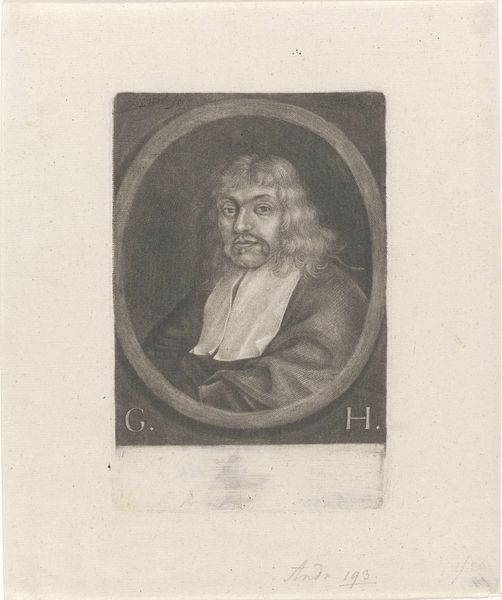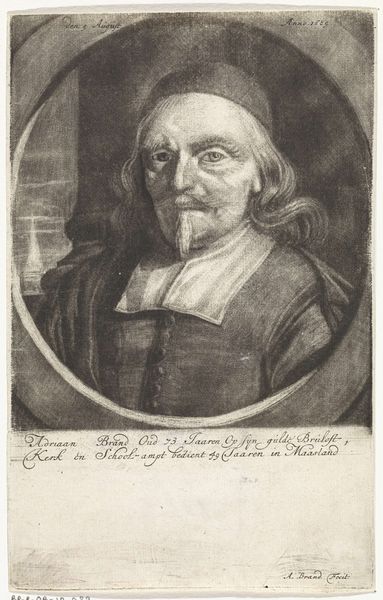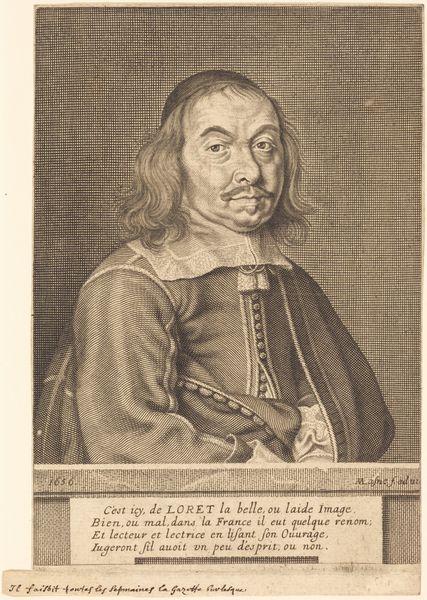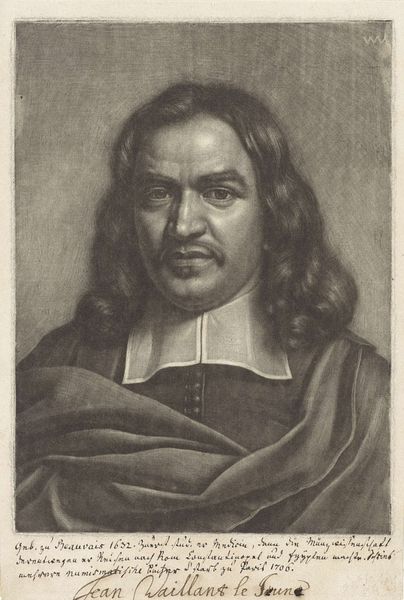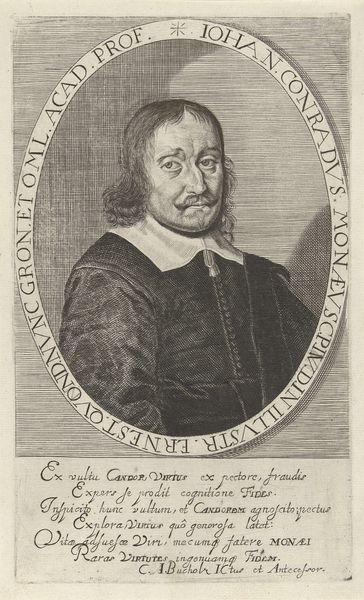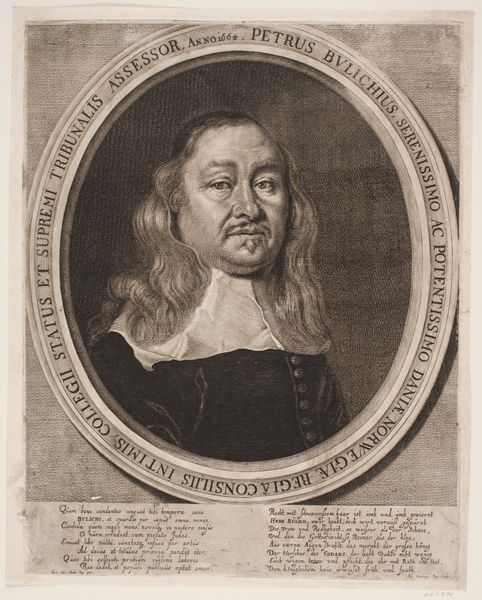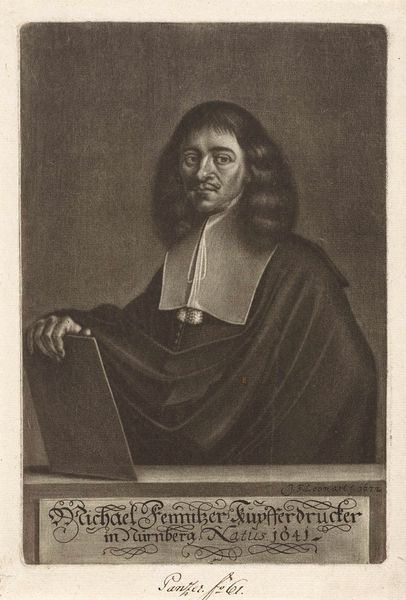
drawing, print, engraving
#
portrait
#
drawing
#
baroque
# print
#
charcoal drawing
#
charcoal art
#
portrait reference
#
portrait drawing
#
engraving
Dimensions: height 149 mm, width 99 mm
Copyright: Rijks Museum: Open Domain
Editor: This is a portrait of Mart Hahn, engraved sometime between 1643 and 1680 by Johann Friedrich Leonard. It's got this incredible textural quality, achieved through the engraving process. What's most striking to me is the subject’s rather penetrating gaze. What do you make of it? Curator: This portrait, like many from the Baroque period, participates in a fascinating dialogue about social status and power. Portraits were, to a large extent, a visual declaration of one's position within a hierarchy. Who commissioned them, who viewed them, where they were displayed—these factors significantly shaped their meaning. I wonder, does this portrait project a certain level of authority to you? Editor: Yes, definitely. There's a confidence in his eyes, even though the print itself is relatively small and understated. The composition certainly emphasizes him. Does the way engravers reproduced images then influence what could be deemed appropriate as the topic for such a portrait? Curator: Absolutely. Engravings served a crucial function in disseminating images and ideas. This portrait, therefore, is not just a representation of Mart Hahn but also a carefully crafted statement meant for a wider audience. Its presence, and by extension Mart Hahn’s presence, would have been amplified by its circulation as a print. This has clear social and political dimensions that are essential for analysis. Editor: So, it's as much about making Mart Hahn known as it is about depicting him accurately. It seems portraiture and printmaking became tools for self-fashioning in early modern society. Curator: Precisely! And consider the role of artistic skill in reinforcing those power structures. The artist is complicit to a large extent. Recognizing the artistic practices as instruments of status, in this case, definitely reframes how we understand art in that era. Editor: This makes me appreciate the complexities embedded in even seemingly straightforward portraiture. I never thought of it this way! Curator: Indeed, it highlights the necessity of thinking about how societal forces interact with artistic production and circulation to shape meaning.
Comments
No comments
Be the first to comment and join the conversation on the ultimate creative platform.
